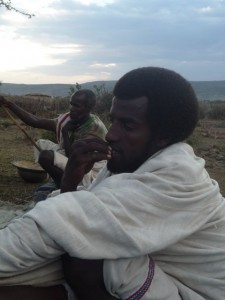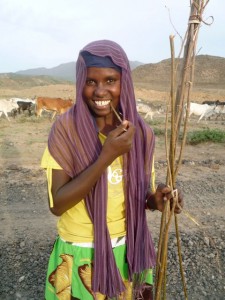About Karrayyu
 The Karrayyu reside in the Awash Valley of Ethiopia. They are members of the Cushitic speaking Oromo ethnic group which make up a significant portion of the population of the Horn of Africa.
The Karrayyu reside in the Awash Valley of Ethiopia. They are members of the Cushitic speaking Oromo ethnic group which make up a significant portion of the population of the Horn of Africa.
Oromo groups are found in different parts of Ethiopia, adapting to their local situation in different ways leading to cultural diversification. Despite local differences they still retain the same language, Afaan Oromo; the same religion, Waaqeffata; and the same governance system, Gada. However, these are no longer practised among many Oromo groups due to pressures from other religions and changes in livelihood.
The Karrayyu are one of the last remaining Oromo groups to maintain the pastoralist way of life as well as the traditional Oromo culture, along with the Borana, Guji and Kamise Oromo. The Karrayyu are considered by many Oromo as guardians of their ancient culture.
The traditional Karrayyu religion is Waaqeffata, which is a monotheistic religion based on belief in a supreme beingcalled 'Waaqa'. This religion is closely related to the natural world as the Oromo pray to Waaqa at sites believed to be particularly blessed, these sites include certain tree species such as Odaa, at specific lakes and water points and on the top of certain hills and mountains. This does not however make them animists, contrary to some explanations.
The Karrayyu also practice the Gada system, an ancient and complex form of African democracy which is traditionally based on generation sets which alternate power every eight years. One full Gada cycle lasts 40 years. Gada is a uniquely democratic political as well as social institution which governs the life of individuals in Oromo society from birth to death.
 The Karrayyu are currently struggling to maintain their traditional way of life and are facing difficulties as a relatively unknown group both within Ethiopia and outside.
The Karrayyu are currently struggling to maintain their traditional way of life and are facing difficulties as a relatively unknown group both within Ethiopia and outside.





